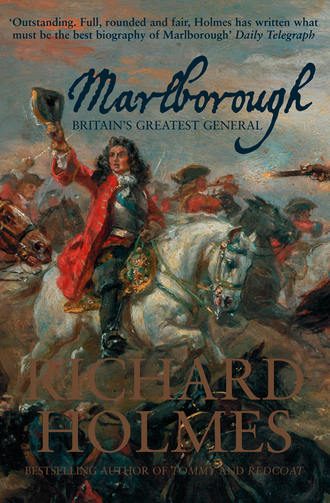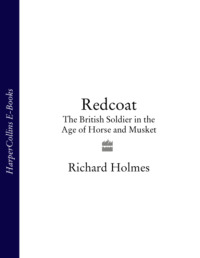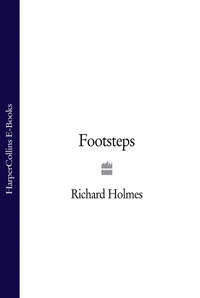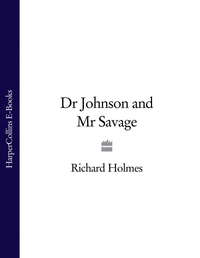
Полная версия
Marlborough: Britain’s Greatest General
‘Captain’ Peter Drake served in the Spanish, Dutch, English and French armies, often joining one without having completed the tiresome formalities which might properly have accompanied his discharge from another. He was wounded at Malplaquet while serving with the Maison du Roi, the French Household Cavalry, and tells us how he owed his life to the duke’s humanitarian intervention at the close of that terrible day.
Sicco van Goslinga’s Mémoires relatifs à la Guerre de Succession show just how unwise it is to follow the prevailing contemporary English view of the Dutch as dour and unhelpful, any more than the Dutch view of the English as dirty and drunken, as necessarily correct. Goslinga, let it be said, is no more inherently trustworthy than any other witness. No contemporary, however influential, had more than a limited view of events. All tended to supplement what they could themselves remember (which might not in itself be accurate) with what they heard from others, who were themselves rarely fully informed. And most, in the way of things, had likes and dislikes which might reflect nothing more than the imponderables of human emotion. However, Goslinga was in the Allied army but not of it, and in regular contact with Marlborough but never dependent on his goodwill for advancement. He saw Marlborough in his depths as well as at his heights: riding out with him to his outposts in the small hours when it seemed certain that the French had trapped him, or sharing the duke’s riding-cloak when both lay down to snatch some sleep after a long and successful pursuit.
Goslinga gives us a pen-picture which at last begins to catch some of the light and shade of Marlborough.
Here is his portrait, as far as I am able to paint it. I do not speak of his fortune, nor of the manner in which he began to make it: his conduct towards his great benefactor and his first benefactress are things well known, and add nothing to the matter in hand. He was born a gentleman: his stature was above average and was one of the finest one might see: he had a perfectly beautiful face, with two fine and sparkling eyes of an admirable colour, a pink and white complexion which a woman might envy, and fine teeth … He had much spirit … very clear and solid judgment, swift and deep penetration, knowing his people well and able to distinguish real merit from false; speaking well and agreeably even in French, which he actually spoke with poor grammar but with a harmonious tone of voice.
On the other hand, Goslinga found him
capable of profound, even the most dangerous deception, which he covers by manners and expressions which seem to express the utmost frankness: he has a boundless ambition, and the most sordid avarice, which influences all his conduct: if he has courage, which he doubtless has, whatever his enemies say, he has certainly not got the firmness of character which makes the real hero … He did not know much about military discipline, and gave free rein to the soldier, who committed frightful disorders. He also knew little of the detail of the profession, less than was proper for a commander-in-chief. Here are the weaknesses which, however, do not detract from the rare talents of this really great man.23
Some of Goslinga’s words find answering echoes elsewhere. The two great English diarists of the age, Samuel Pepys and John Evelyn, both had a view of Marlborough. Pepys, ‘sole counsellor’ to the newly ennobled George Legge, Lord Dartmouth, on his 1683 fact-finding trip to the English garrison of Tangier, chatted with his master about John Churchill, as he then was. Dartmouth:
tells me of the Duke of York’s kindness to him and how Churchill was made what he is by my Lord Rochester, only to lessen him; and that all he knows Churchill rewards himself by, is his lying with their wives, which he says is not certain as to my ladies Rochester and Sunderland.24
This was the sort of salacious gossip that Pepys loved, and in part Dartmouth’s words no doubt reflect the suspicion of one fast-rising man for another. Yet there were persistent rumours that Churchill turned his remarkable physical attractiveness to his advantage, and he is certainly not the first British commander to profit from being big and bonny; nor, no doubt, will he be the last.
In 1702, well before Marlborough had won his greatest victories, John Evelyn complained of the ‘excess of honour conferred by the Queen on the Earl of Marlborough, by making him a Knight of the Garter, and a Duke, for the success of but one campaign’, but added: ‘He is a very handsome person, well-spoken and affable, and supports his want of acquired knowledge by keeping good company.’25 In February 1705, just a year before his death, Evelyn visited Lord Godolphin.
I went to wait on my Lord Treasurer, where was the victorious Duke of Marlborough, who came to me and took me by the hand with extraordinary familiarity and civility, as formerly he was used to do, without any alteration of his good nature. He had a most rich George in a Sardonyx set with diamonds of very great value, for the rest, very plain.* I had not seen him for some years, and believed he might have forgotten me.26
This is a telling anecdote. Marlborough’s social accomplishments were legendary, and his ability to remember old acquaintances did much to help him. The Earl of Ailesbury remembered that when he was a Jacobite exile and Marlborough was the queen’s captain general and Allied commander-in-chief, the duke gave him dinner at his own ‘little table’ at headquarters, and held his hand for part of the meal, although (and here is another penetrating insight) he ensured that their clasped hands were hidden under a napkin.
Portraits in a Gallery
We can get much closer to our quarry in words than we ever can in pictures. Portraits often deceive, and it is perhaps in the early eighteenth century that the deception is most complete. There are the great men of the age, with well-scrubbed pink-and-white faces, staring complacently at their world from beneath full-bottomed wigs, lips pursed in the half-smile of those who know that life has treated them well. The peruke’s soft curls and the snowy lace of a jabot tumble onto a coat whose stuff and hue betokens the wearer’s status: a cleric’s black broadcloth, a merchant’s prosperous blue or plum, or a soldier’s martial red. Peers often wear the ermine of their House, with a coronet denoting their rank (six silver balls on a plain silver gilt circlet for a baron, and on to the chased coronet with its eight strawberry leaves for a duke) dangling from the noble fingers or tossed onto a table just within the picture’s frame. In their portraits generals appear in the armour they would never have worn on the battlefield, sometimes with a plumed helmet, as useless then as a general’s ivory-hilted dress sword is today, standing in for a peer’s coronet.
Women are plump-faced, opulent of bust and shoulders, and usually portrayed with their heads tilted ever so slightly to the right to allow the artist to throw some shadow beneath a soft jawline. Children are rarely allowed much in the way of childhood. Once boys had been breeched, at the age of four or five, they appeared as miniature adults. Johann Baptiste Clostermann’s huge family portrait of the Marlboroughs, painted in about 1694, shows the parents and their five children against theatrical drapes. John, later Marquess of Blandford, their eldest son, is stepping up onto the dais, looking back at the artist and gesturing proudly towards his elegant family. He was nine years old at the time.
A year later Nicholas de Largillière painted James II’s only legitimate son, James Francis Edward Stuart (‘the Old Pretender’) and his sister Louisa Maria Theresa. Although the young prince was only seven and his sister just three, both are dressed for court: James is wearing long coat, lace jabot and silk stockings, and Louisa has a dress with a train and the tall fontange headdress. William Henry, Duke of Gloucester, was the only one of Queen Anne’s many children to live beyond infancy, and was regarded by many as the heir most likely to prevent the restoration of his uncle James II. In 1699 Sir Godfrey Kneller painted him as a warrior prince, with a soldier’s cuirass: the boy was ten years old and had just a year to live.
There is enough symbolism to keep costume historians busily engaged for years. Gentlemen advertise their status by wearing swords, the slim, straight-bladed small sword in town and the stubbier hunting sword in the country. Races at Newmarket, then the only major national meeting, were an exception, for folk of all classes met on equal terms, turning out ‘suitable to the humour and design of the place for horse sports’, with nobody wearing swords. Spurs were important even if there was no evidence of a horse, for they showed that although the sitter might not be riding at the time, he could vault into the saddle at a moment’s notice. Not for nothing did the Latin inscriptions on gentry’s tombstones style a knight as equitus and a gentleman as armiger. In Charles II’s time red shoe-heels – a fashion borrowed, like so much else, from France – suggested noble rank, and the fashion spread so that officers of the Restoration army were as identifiable by their bright heels as their great-grandsons were to be by their epaulettes. The greatest officers of state, like the lord treasurer and secretary of state, carried thin white staffs of office. Sidney, Earl Godolphin, had his made short enough to be carried in a sedan chair, while the Earl of Rochester had his, of the longer variety, carried by a bareheaded footman to allay any doubts about the distinction of his chair’s occupant.
A portrait of Sarah, Duchess of Marlborough painted in about 1700 had a gold key added to its waist in 1702. In the interim Sarah had become keeper of the privy purse to the new queen, Anne, and the key confirms the status that her expression already suggests: she is a woman whose beauty is matched, at last, by her wealth and influence. And so pigment is splashed across canvas. Mouths curve like cupid’s bow, dogs stare admiringly at masters, steeds curvet without apparent inconvenience to riders, and occasionally, like extras in a drama, lesser mortals gather slain game or ply musket and bayonet amidst the background smoke.
None of this is a great deal of help to historians. Even court artists in England, it is true, could rarely disguise that bulbous blue-eyed, faintly irascible expression that characterised the Hanoverians, any more than their colleagues in Vienna could do much with the Hapsburg jaw. However, artists seldom get us beyond polite generalities. Portraits of Prince Eugène of Savoy-Carignan, Marlborough’s great collaborator, give no real sense that he was widely regarded as one of the ugliest men of his age, and almost always had his mouth slightly open. Louis XIV, for all his sneer of cold command, was five feet five inches tall, a full five inches taller than Charles I but an inch and a half shorter than William of Orange – who was four inches shorter than his wife Mary. William himself was, if you will forgive the phrase, no oil painting: he was thin and somewhat hunchbacked, and his face, already striving to accommodate a prominent nose, was heavily pockmarked.
While artists were happy enough to use their skills to reflect status and lineage and to hint at accomplishments and aspirations, in the main they present us with a great number of plump-faced, well-to-do gentlemen in wigs, accompanied by ladies perhaps too generously built for modern taste. Charles II’s mistresses were generally Junoesque but pretty, while James II’s were as substantial, but so very, very plain that Charles quipped that they had been imposed upon his brother by his confessor as a penance. Sir Peter Lely’s portraits, however, make them look so alike that even contemporaries complained:
Sir Peter Lely when he had painted the Duchess of Cleveland’s picture, he put something of Cleveland’s face as her languishing eyes into every picture, so that all his pictures had an air of one another, and the eyes were sleepy alike. So that Mr Walker the painter said Lely’s pictures were all brothers and sisters.27
Century of Revolution
At one level, the barrier that portraiture interposes between us and Marlborough’s age is a useful corrective. Philip Guedalla, whose books did so much to arouse my passion for history, wrote of the world ‘spinning down the long groove of the eighteenth century’. How wrong he was. The world does not, so to speak, change step as a new century appears, and there is rarely a well-oiled hinge between one epoch and another. Marlborough was in many ways a creature of the seventeenth century, profoundly marked by his family’s experience of the Civil War. But his thoughts and character were forming at just the time that the spiritual and political convictions that had made the war possible were changing. Christianity, as Christopher Wren’s light and airy churches testify, was becoming more rational and less constricting. The execution of Charles I on the one hand, and the Restoration of his son on the other, left both royalists and radicals aware that God’s favour could prove all too transient. Science was fast becoming secularised, and a series of major discoveries, starting with Harvey’s work on the circulation of the blood and continuing with the ideas of Newton, Boyle and Hooke, began to replace old mysteries with new rationalism.
This science, however, had yet to transform the economy. Marlborough died while his country was experiencing the first birth-pangs of the Industrial Revolution. The road system he knew would have been familiar to his Tudor ancestors: York and Exeter were still over three days’ travel from London. John Evelyn’s house at Wotton, near Guildford in Surrey, was twenty-six miles from London but was ‘so securely placed as if it were 100’. The first turnpike (essentially a toll road) was established in 1663, and there were only seven turnpikes by 1700: the great explosion did not come till after 1750. The intrepid Celia Fiennes reported in 1698 that her route around England ‘was in many places full of holes, though it is served by a bar at which passengers pay a penny a horse to the maintaining of the way’. John Byng, writing a century later, mused:
I am just old enough to remember turnpike roads, few and bad; and when travelling was slow, difficult and, in carriages, dangerous … In the days of bad roads the country could not be stripped of its timber or despoiled of its honesty, cheapness, ancient customs and civility; every gentleman, then, was bowed to with reverence, and ‘A good morning to you, master. Good evening. Good journey to you, sir,’ were always presented; with every old-fashioned wish, and compliment of the season …
Even till lately, there were hollow ways from Grays Inn Lane to Kentish Town, and a long deep water to be waded through from Mother red-Caps in the road to Highgate. All the Hertfordshire roads were deep ravines.28
The first breaths of the wind of change could already be felt. The swash and buckle of Restoration drama was light years away from the masques of the early part of the century. The witty and elegant essays of Joseph Addison and Richard Steele are, suggests one editor, like old silver, whose fashion is still well regarded even if its weight is negligible.29 Political thought was also changing fast. In 1690 John Locke affirmed that ‘All men are naturally in a state of perfect freedom to order their actions and dispose of their possessions and persons as they think fit without asking the leave or depending upon the will of any man.’ Locke could get away with this in Britain, but these were dangerous ideas elsewhere: the Enlightenment was still two generations away, and few contemporary European monarchs would have tolerated such words.
For some historians the Glorious Revolution of 1688, which saw James II replaced by William and Mary, is the real turning point, although it accomplished less than many contemporaries hoped. For others, though, the real break comes with the Hanoverian succession, which brought George I bloodlessly to the throne in 1714, even though Jacobitism was to remain a threat until the defeat of Charles Edward Stuart, James’s grandson the ‘Young Pretender’, in 1745–46. Were our focus here European rather than more narrowly British then we might see the 1713 Treaty of Utrecht, which ended the War of Spanish Succession, and with it the more extravagant ambitions of Louis XIV, as a sharp bend in history’s long and rutted road.
It is not my purpose to answer the undergraduate question as to whether the seventeenth century really ended in 1688 or 1714. Suffice it to say, though, that the most important years of Marlborough’s active career lay between these dates, and that he lived through a period of quite extraordinary change and uncertainty. This was much more the case with the military profession than most biographers acknowledge. He was commissioned into an army which, with its pikes, matchlock muskets and lobster-tail helmets, would not have surprised Oliver Cromwell, and he died as captain general of a force whose infantry had made its reputation with those measured volleys that Wellington so admired.
What is history to us was an unknown and challenging future to John Churchill; even to begin to grasp him we must break from what some historians call ‘presentism’, the inability to see anything save through the lens of the present moment. None of the events of 1688–1714 was predestined. A more adroit James II might have retained the kingdom bequeathed to him by his more supple brother; the ‘Protestant Wind’ of 1688 might so easily have blown up into a Catholic gale; the cannonball which grazed William III at the Boyne in 1690 might have killed him just as surely as another ball decapitated the very capable Jacobite commander, the marquis de St Ruth, at the deciding moment at the battle of Aughrim the following year.
There were no certainties for a man like John Churchill. He was stripped of all his offices twice in his career, imprisoned in the Tower on the first occasion and effectively exiled on the second. He ran the risk of the battlefield death that snatched so many of his comrades and opponents: at Ramillies a cannonball took the head off his equerry as he held the duke’s stirrup for him to mount a fresh charger. He lived in a world where disease was rife and today’s hero was tomorrow’s corpse. Smallpox was no respecter of persons: King William lost his parents and his wife to the disease, and it carried off Queen Anne’s only surviving son the Duke of Gloucester and Marlborough’s own heir the Marquess of Blandford. Indeed, of the five children in that carefully posed Clostermann painting of Marlborough’s family only two lived beyond their twenties. We must judge Marlborough in the light of his times, not our own, and a biographer’s first task must be to sketch out the background to the portrait he is painting.
There are indeed moments when the immediacy of the spoken word strips away the years. The Reverend Andrew Paschall, rector of the Somerset village of Chedzoy, tells us how, when the rebel Duke of Monmouth’s men were first detected in their night attack on the royal army’s bivouac at Sedgemoor in 1686, a trooper of the Horse Guards galloped
full speed to the camp, calls with all imaginable earnestness, 20 times at least, ‘Beat your drums, the enemy is come. For the Lord’s sake beat your drums.’ He then rode back with the like speed the way he had come … Now the drums beat, the drummers running to it, even barefoot for haste. All fly to arms.30
Yet there are as many times when the period seems more ancient than modern. It is easy to forget how deep the iron of Charles I’s execution had entered into the royalist soul. On 17 September 1661 (with young John Churchill still unbreeched) John Evelyn wrote:
Scot, Scroope, Cook and Jones, suffered for reward of their iniquities at Charing Cross, in sight of the place where they put to death their natural Prince, and in the presence of the King his son who they also sought to kill. I saw not their execution, but met their quarters mangled and cut and reeking as they were brought from the gallows in baskets on the hurdle. Oh the miraculous providence of God!31
Male traitors were hanged, drawn and quartered, a gruesome process that involved being dragged through the streets on a hurdle, partially strangled, and then castrated and disembowelled. The victim’s guts were ‘burnt before his face’ before he was beheaded and quartered. By 1745 the executioner would customarily leave his victim hanging long enough for him to be unconscious, but as late as 1715 some men were ‘bowelled alive and seeing’. The victim’s quarters, duly pickled for longevity, were stuck up at suitable points to ensure that the message was widely distributed. When Captain-Lieutenant Sir Thomas Armstrong of the Life Guards was executed as a traitor in 1683 one of his quarters was sent off to Stafford, where he had been Member of Parliament. The monarch might, by exercise of his prerogative, remit the punishment to beheading or simple hanging. At the time of the Popish Plot (1678–81), William, Lord Russell, had argued that the king did not have it in his power to show such leniency, and when he himself was convicted of treason in 1683 he bravely made no personal appeal for clemency. He was granted the favour of the axe, although the executioner botched his job.
Female traitors, whether they were guilty of high treason towards the monarch or petty treason – an act against what was perceived as being the natural order of things, like the murder of a husband or employer – were burnt at the stake. This too might be commuted to beheading (as it was for Alice Lisle, executed in the square at Winchester in 1685), or the executioner might be privately ordered by the sheriff to stab or strangle his victim before the fire took hold. The devout and philanthropic Elizabeth Gaunt, convicted of harbouring rebels after Monmouth’s rebellion in 1685, probably has the dreadful distinction of being the last woman in Britain to be burnt alive by judicial process. She met her end with exemplary courage, but the spectacle was profoundly shocking even to spectators used to brutality. Gilbert Burnet wrote that ‘Penn, the Quaker, told me, he saw her die. She laid the straw about her for burning her speedily, and behaved herself in such a manner, that all the spectators melted in tears.’32
There was a widespread feeling that such savagery went against the spirit of the age, and James II’s inability to understand this was not least amongst the causes of his failure as a monarch. It also ran squarely against what seemed to be natural justice. Lord Grey of Wark, who had commanded Monmouth’s cavalry with towering ineptitude, bought his life for a full confession, the surrender of large parts of his estates, and the promise to give evidence against other prominent members of the rebellion. When he testified against Lord Delamere, arraigned before his peers on 16 January 1686, he proved such a poor witness that Delamere got off. The first peer to give his verdict that day was John, Lord Churchill, the junior baron present, who announced: ‘Not Guilty, upon my honour.’
The barbarity of gallows, pyre, block and pillory sits uncomfortably alongside the poetry of John Dryden or the witty dramas of Aphra Behn. It was there in the background when Steele sketched out that genial baronet, Sir Roger de Coverly.
He is now in his Fifty sixth year, cheerful, gay and hearty, keeps a good House both in Town and Country; a great Lover of Mankind; but there is such a mirthful Cast in his Behaviour, that he is rather beloved than esteemed: His Tenants grow rich, his Servants look satisfied, all the young Women profess Love to him, and the young Men are glad of his Company: When he comes into a House he calls the Servants by their Names, and talks all the way up Stairs to a Visit. I must not omit that Sir ROGER is a Justice of the Quorum; that he fills a chair at a Quarter-Sessions with great abilities, and three months ago gain’d universal Applause by explaining a Passage in the Game-Act.33









